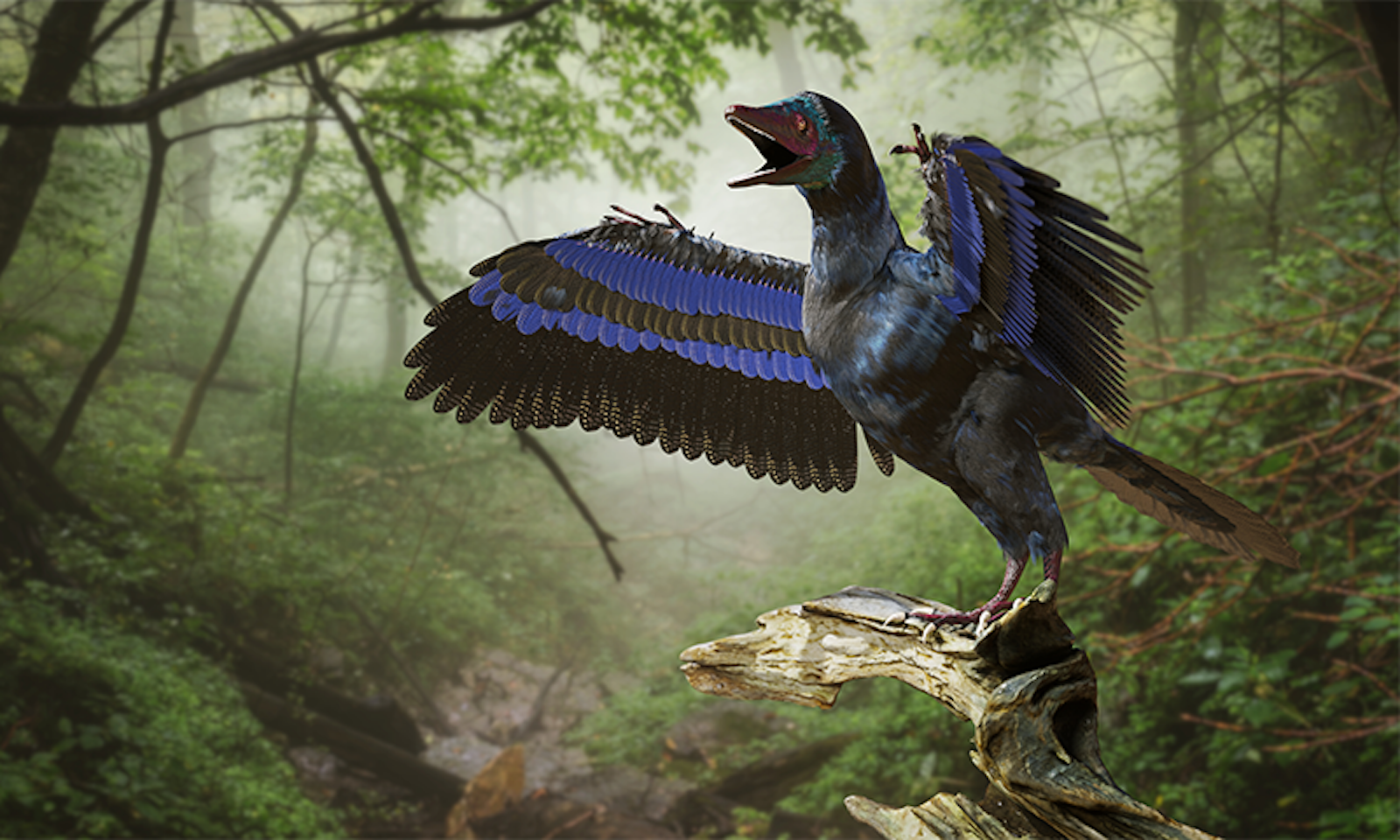The archeopteryx, a small animal that lived around 150 million years ago, resembles a cross between an ancient Jurassic dinosaur and a modern-day bird. Measuring about 20 inches long from its teeth to the end of its long tail, it had black-feathered wings, and many scientists believe it was among the earliest species to fly. When its fossil was first discovered in 1861, some people thought it was an angel.
Though scientists have found some evidence suggesting even earlier bird-like dinosaurs could fly, the timeline remains in question. And how birds evolved all the features they’d need for flight before they could actually benefit from flying is still unclear. There’s an age-old question about avian evolution, says avian paleontologist Chris Torres of Ohio University: What use is half a wing?
You don’t have to think about flying, your spinal cord just takes over.
Recently, researchers found some clues to the evolution of flight by creating the first maps of living birds’ brain activity during flight and rest. A team of scientists trained eight large white pigeons to fly back and forth between perches in a lab. Then they injected them with tracer and used a PET scanner to record activity (glucose metabolism) in different parts of their brains when they were at rest on the perch and after a short period of flight. To see which areas were more active during flight, they compared the scans.
The cerebellum stood out in bright red, says Amy Balanoff, an assistant professor at Johns Hopkins University and one of the paper’s authors. These are early data in only one species, and they don’t track brain activity second to second, but the scans showed statistically significant increases that were most dramatic in a few folds of the cerebellum—folds known to be involved in processing visual information.
The data likely reflect the parts of the brain engaged in starting, stopping, or changing direction during flight, the researchers say, because the actual wing strokes of flight, like the steps humans take while walking, seem to be more controlled by the spinal cord. “You don’t have to think about walking, you don’t have to think about flying, your spinal cord just kind of takes over,” Balanoff says.
Balanoff and her co-authors went one step further to connect the brain signals to fossils: They looked inside the skulls of dinosaurs that are most closely related to modern birds. Then they used three-dimensional scans to create digital casts of these shapes to estimate the size and shape of the animals’ cerebellums.
“The cerebellum, it’s sitting on the back of the brain like a bump,” says Douglas Wylie, a professor of biological sciences at the University of Alberta. “So you’re able to make some estimates of the cerebellar size relative to the rest of the brain.”
What use is half a wing?
The fossil record shows that dinosaur cerebellums expanded significantly well before the age of archeopteryx 150 million years ago, hinting that earlier creatures like maniraptorans may have flown. Or they at least enjoyed the improved balance and muscle coordination that likely came with a bigger cerebellum, and later animals may have made use of those abilities as they evolved to fly.
“Behavior is extraordinarily difficult to reconstruct from the fossil record,” says Torres, who studies avian fossils. “We are operating with a tiny sliver of the amount of data that describes the bird’s biology.” There’s not enough evidence to give any sense of variation among species, leaving researchers with only minimal clues toward how birds first took off.
Among those hints, researchers spotted some areas thought to be involved with flying that actually didn’t light up more after birds flew. Still, because the birds weren’t doing much steering or dodging in the test environment, the brain activity of the pigeons might differ from typical bird flight in the wild, noted Andrea Gaede of the Royal Veterinary College of London, who studies visual motion processing. And some brain areas may be just as active at rest—showing no increase in flight—because they are working at different tasks during rest.
Torres hopes brain activity data like these can help fill out the picture of how other behaviors evolved. He wants to understand why geese and ducks are still here when so many powerful dinosaurs are not. “The only dinosaurs that made it are the only ones that we can definitively say were capable of powered flight,” Torres said. “Understanding the origins of powered flight helps us understand the origins of modern-day biodiversity.” ![]()
Lead image: Dotted Yeti / Shutterstock




























